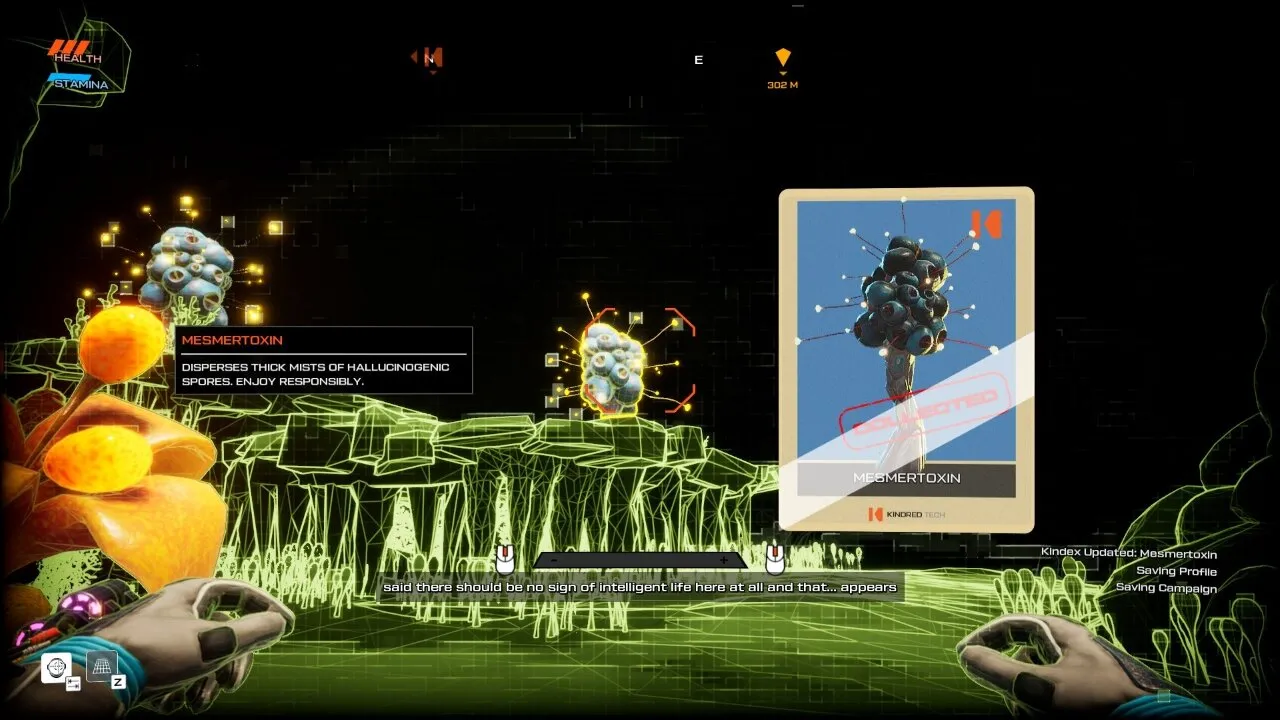
Journey to the Savage Planet: A Hilarious Adventure Hampered by Linearity
Contents
Journey to the Savage Planet, unveiled at The Game Awards 2018, quickly captured attention with its vibrant, simplistic art style and humorous approach to first-person action-adventure gameplay. The game’s aesthetic and quirky creatures evoke comparisons to No Man’s Sky, while its comedic tone echoes the Borderlands series. But what does Journey to the Savage Planet truly offer players? This review explores the game’s strengths and weaknesses.
 Alt: A screenshot from Journey to the Savage Planet showcasing the game’s colorful alien flora and the player character exploring the environment.
Alt: A screenshot from Journey to the Savage Planet showcasing the game’s colorful alien flora and the player character exploring the environment.
Exploring a Hilarious Alien World
From the unconventional character selection to the amusing introductory sequences emphasizing the importance of planetary exploration, Journey to the Savage Planet welcomes players with lighthearted humor. You embark on a somewhat involuntary adventure, ill-equipped and largely ignorant of your destination. The gameplay can be described as a 3D Metroidvania, but unlike the challenging platforming of Ori and the Will of the Wisps or Star Wars Jedi: Fallen Order, Journey to the Savage Planet takes a gentler approach. Traversing the terrain is relatively straightforward, punctuated by encounters with mostly docile creatures.
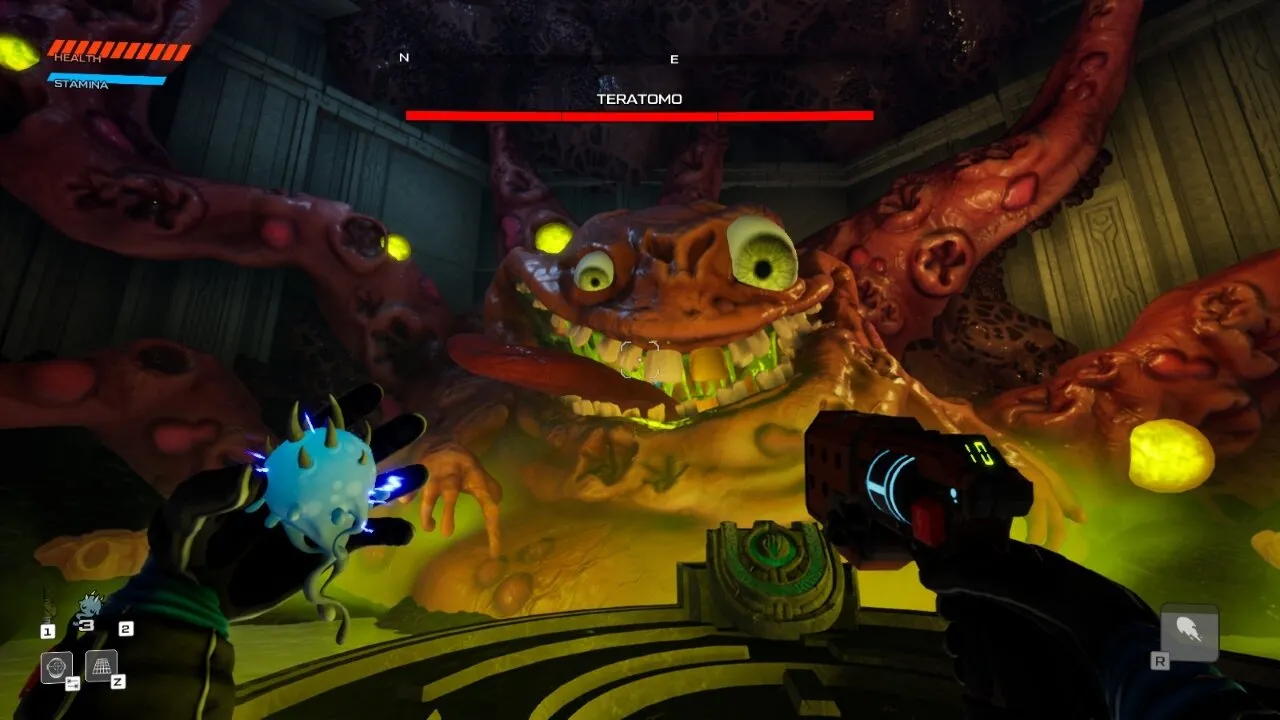 Alt: The player character in Journey to the Savage Planet using a jetpack to navigate a colorful alien landscape.
Alt: The player character in Journey to the Savage Planet using a jetpack to navigate a colorful alien landscape.
The vibrant visuals and generally friendly environment encourage exploration and curiosity. Combat areas are well-designed, providing ample throwable objects and healing plants. Boss battles are a highlight, featuring a simple yet satisfying mechanic: deplete the boss’s health by shooting glowing yellow orbs on their bodies with your unlimited ammo weapon. Boss attack patterns are predictable without being overly simplistic or frustrating. A scanner, available from the start, allows you to analyze flora, fauna, and ruins, revealing humorous yet often helpful information about creature weaknesses and item uses. Adding to the comedic atmosphere is E.K.O, your virtual assistant, who delivers a constant stream of dry wit, reminiscent of Claptrap from Borderlands, even poking fun at your less-than-intelligent decisions. This constant comedic undercurrent transforms the game into a sort of interactive sitcom, adding to the overall enjoyment. For those seeking shared laughter, a co-op mode allows a friend to join the mayhem.
A Linear Journey Through a Repetitive World
Despite its expansive open world, Journey to the Savage Planet struggles to maintain player engagement due to repetitive environments and a linear mission structure. While the game boasts vibrant colors, each new area offers only minor variations in flora and fauna. Essentially, you encounter the same cute creatures, albeit with different colors and names, some of which become hostile in later stages. This lack of significant environmental diversity diminishes the sense of wonder and exploration.
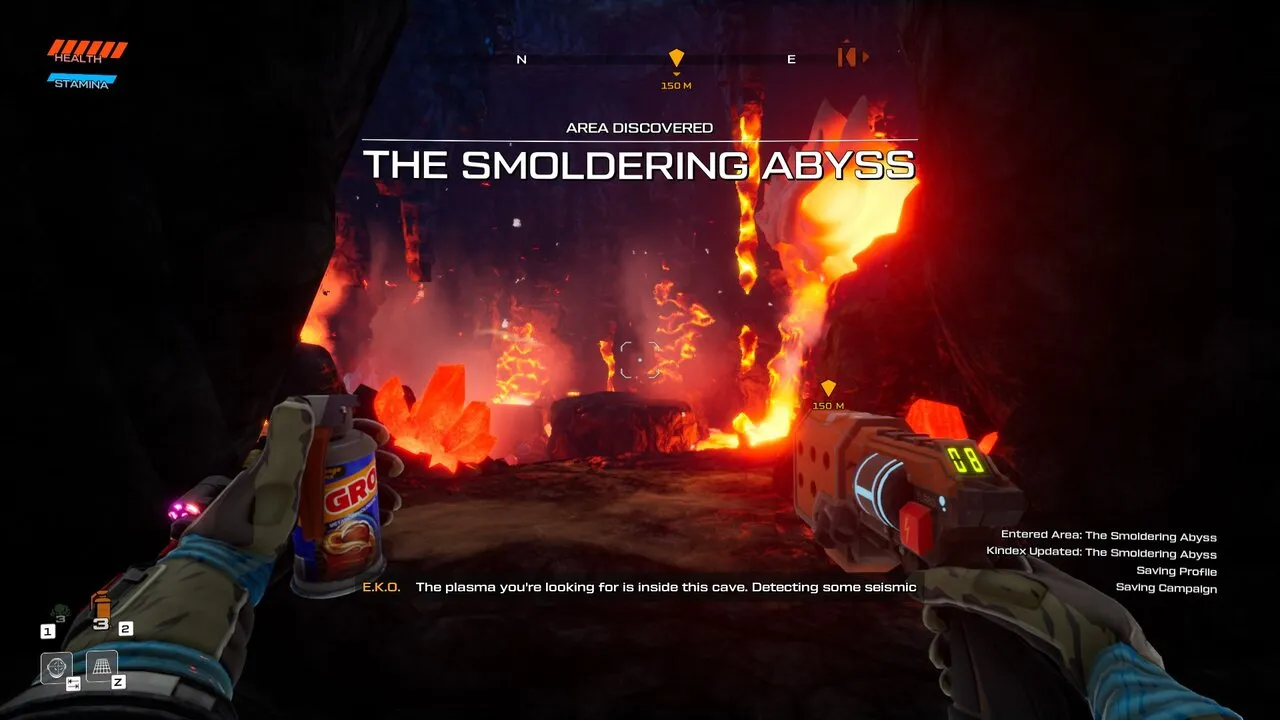 Alt: A screenshot from Journey to the Savage Planet showing the player character standing on a cliff overlooking a vast alien landscape.
Alt: A screenshot from Journey to the Savage Planet showing the player character standing on a cliff overlooking a vast alien landscape.
Missions are overly linear, with objectives clearly marked by a map arrow. This constant hand-holding feels like blindly following GPS directions, reducing the game to a series of fetch quests and interactions with specific objects, followed by brief cutscenes. The repetitive cycle of receiving a new objective, traveling to a new area, and completing a simple task quickly becomes tedious. This linear progression, while guiding you through uncharted territory, ultimately detracts from the adventure’s potential.
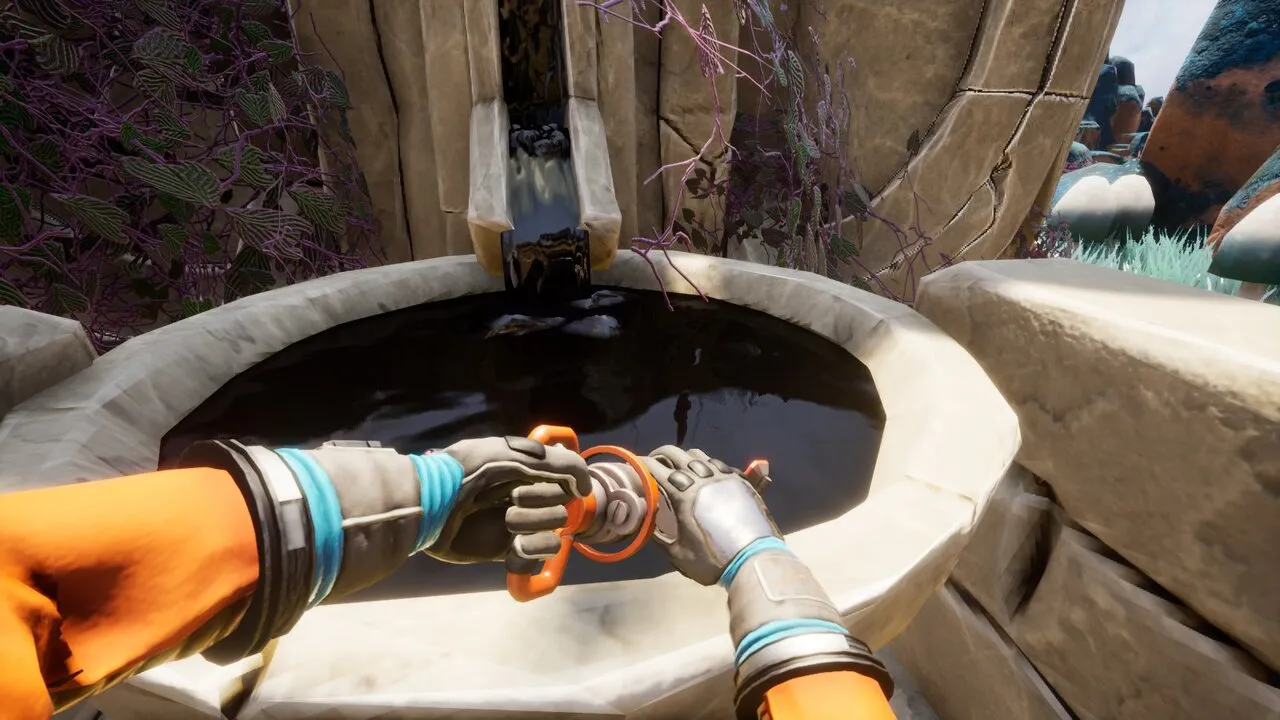 Alt: A view of a strange alien plant in Journey to the Savage Planet, demonstrating the game’s unique flora design.
Alt: A view of a strange alien plant in Journey to the Savage Planet, demonstrating the game’s unique flora design.
A Shallow Take on RPG Elements
Journey to the Savage Planet incorporates various action-RPG elements, including crafting, open-world exploration, and equipment upgrades. However, these features lack depth and contribute to the game’s overall ease, potentially leading to player burnout. Upgrades are limited to minor improvements like increased ammo capacity, reload speed, and damage output. While you can upgrade your double jump to a triple jump or increase the number of throwable items you can carry, these enhancements offer minimal impact on gameplay. The limited upgrade options, coupled with increasingly expensive resource requirements, further diminish the appeal of the crafting system. Resource gathering itself is repetitive, involving mining, killing creatures, or even “fattening them up.”
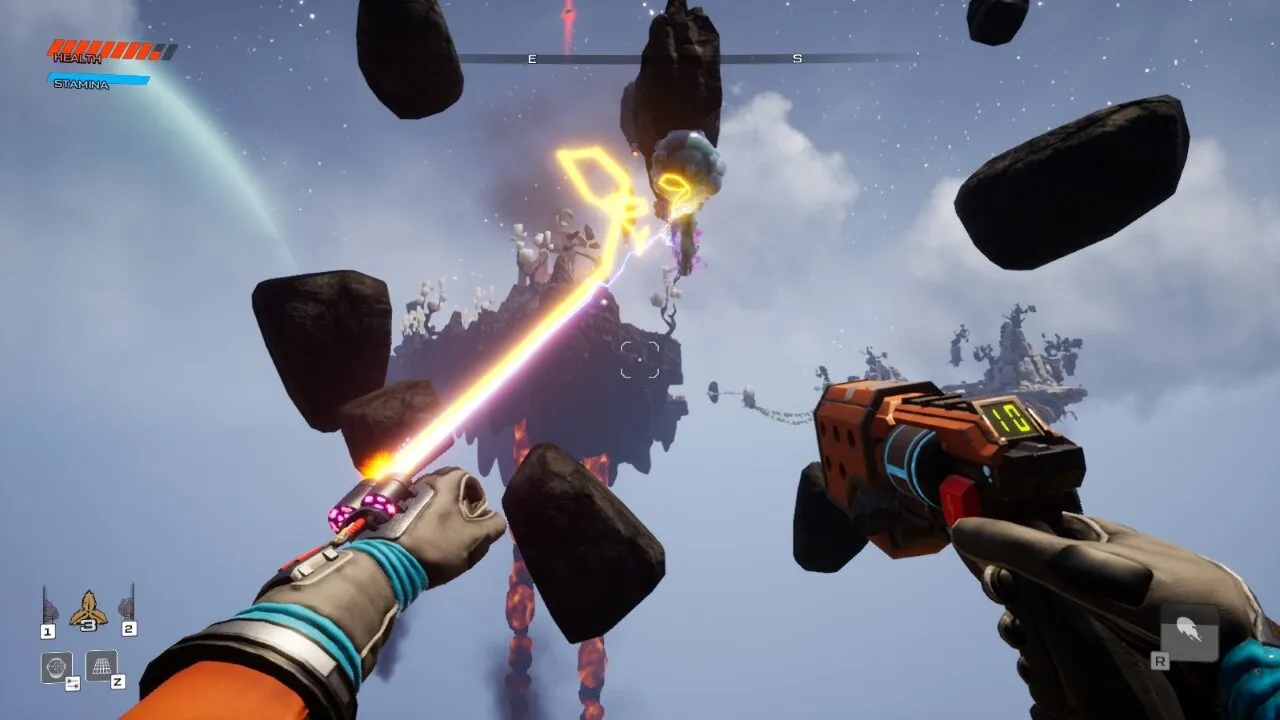 Alt: The player aiming their weapon at a strange, glowing alien creature in Journey to the Savage Planet.
Alt: The player aiming their weapon at a strange, glowing alien creature in Journey to the Savage Planet.
Platforming sections are equally underwhelming, consisting primarily of simple jumps between platforms. Even if you fall, the game automatically respawns you at the previous checkpoint, eliminating any sense of challenge. A potentially interesting grappling hook mechanic proves equally disappointing, requiring only a single button press to attach to a surface, after which the game automatically guides your character, requiring no player input.
Conclusion
Journey to the Savage Planet offers a humorous and visually appealing adventure, but its linear gameplay, repetitive environments, and shallow RPG elements ultimately hinder its long-term appeal. While the comedic writing and quirky creatures provide initial entertainment, the lack of depth and challenge prevents the game from reaching its full potential.
Game Information
- Developer: Typhoon Studios
- Publisher: 505 Games
- Genre: Action-adventure, RPG
- Release Date: October 30, 2020
- Platforms: PC, PlayStation 4, Xbox One, Stadia, Switch
Minimum System Requirements
- OS: Windows 7, 8, 10
- CPU: Intel Core i5-750 2.67 GHz
- RAM: 4 GB
- GPU: NVIDIA GeForce GTX 660 or AMD Radeon HD 7950
- Storage: 6 GB
Tested System Configuration
- OS: Windows 10 Home 64-bit
- CPU: Intel Core i5-9300h 2.4GHz
- RAM: 16 GB
- GPU: Nvidia Geforce GTX 1660ti 6 GB
- Storage: 512 GB NVMe M.2 PCIe Gen 3×2 SSD





Comments (0)